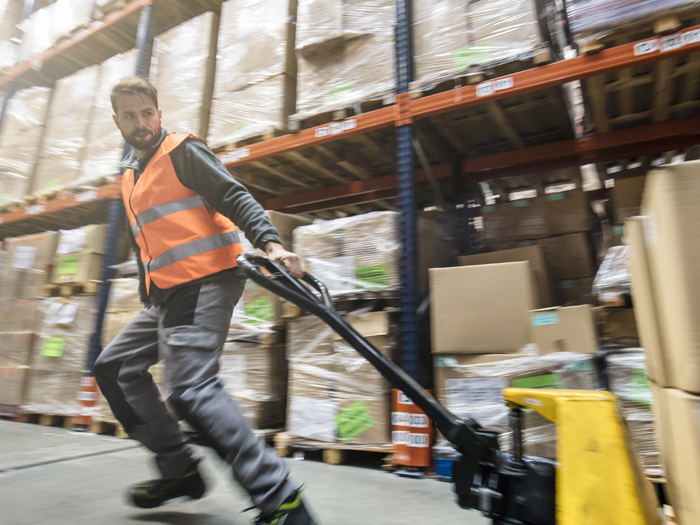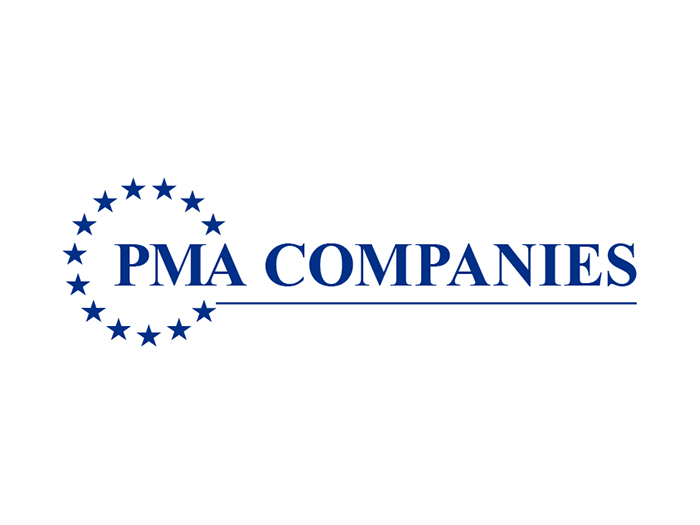Want to Up Your Back Safety Game? Ergonomic Experts at Ohio State and Blickle Share Their Best Tips

Tips for preventing back strains and injuries in the workplace, and selecting the right equipment to realize that goal, will be the focus of two October 7 virtual sessions at the National Ergonomics Conference and Ergo Expo.
Gary Allread, program director for (SRI) Ergonomics at Ohio State University will present “Using Newly Developed Push-Pull Guidelines to Improve Materials Handling Tasks.”
Rob Jorden, vice president of engineering for Blickle U.S.A. Wheels and Casters, Inc. will discuss “Ergonomics Versus Performance in Casters.”
Push and Pull Guidelines
Allread says his session will highlight SRI’s newly developed guidelines that address the safety of push-pull tasks that previously have not received the attention they deserve even though they are becoming more prevalent in the workplace.
“A lot of work in industry involves people pulling pallet jacks and other carts and you even see it in offices where janitors are pulling trash bins and things like that,” he said. “To my knowledge there was no guideline developed previously to evaluate pulling.”
The injuries associated with pushing and pulling tend to be increasing as opposed to lifting injuries that are decreasing.
“Safety professionals have been doing a good job with how to reduce stress when people are lifting items,” Allread said. “But there is an opportunity here to improve how people push and pull items in a safe manner.”
He said previous assessment methods didn’t focus on pushing and pulling.
“People didn’t think pushing and pulling was risky because they were using assessment means that didn’t really truly represent how the back gets stressed when people push or pull,” he said.
“Now we’re able to do that more accurately and we’re finding that these tasks can be very stressful. They load the back in different ways.”
Industry Trends
Other trends also are contributing to the need to better understand the impacts of pushing and pulling on the spine.
“The U.S. is going away from manufacturing,” he said.
“But we still consume a lot of goods, and we have to distribute those goods so there are a lot more warehouses and distribution centers being built, and there is lot of pushing and pulling occurring in these facilities.”
According to Allread, push-pull tasks account for 20% of low-back injuries. Pulling, which he says has not been adequately addressed in previous guidelines, is particularly risky when an individual twists as they pull something or uses one arm to pull.
“Guidelines developed by Liberty Mutual were a great tool and are a great tool,” he said.
“But the Liberty Mutual tables only apply to two-handed pushing. Our guidelines are more robust. They cover activities in industry like turning while pulling with one hand or pushing while turning.”
He said the guidelines rely on the newest information and understanding of the spine.
“The reason we developed new guidelines is that we have a better understanding of how work activities stress the back particularly,” he said.
The free guidelines will help companies evaluate whether an activity is safe rather than relying only on what an employee might believe about a task.
“People may think an activity is safe, but that may not be the case,” he said.
“Our model uses advanced techniques. It looks at muscle activity and uses a validated spine model to determine whether or not an activity is causing damage to the back at that point in time.”
Allread will also highlight case studies to show attendees how the guidelines can be applied effectively in their workplaces.
There may be several options for making a task safer, such as changing the height of handles.
“That alone may be enough to make the job safer rather than investing in casters that can be a lot more expensive,” he said.
Applying the guidelines also may help companies rethink their work practices.
“It might be that people tend to pull an item, which we know is riskier than pushing,” he said.
“What if a person pushes with two hands rather than pulls, does that make the job safer?”
Setting Realistic Priorities
Much like Allread who wants businesses to be realistic about the risks that tasks workers perform, Jorden, in his session on casters wants to help companies understand their priorities and be realistic about how casters can perform for them.
“Everything in casters and ergonomics in general is a trade-off,” he said.
“If you want something to be easier to push then you will have a trade-off in noise, or load capacity or performance in some other way.”
He said companies need to understand where their priorities lie before they start looking for a solution.
“It’s not like a car where you can pay a ton of money and get a car that satisfies every possible need you may have,” he said.
“It’s kind of a sliding scale so when you get a caster or a materials handling application that’s very easy or very ergonomic to control, it comes with downsides.”
When Blickle works with clients, he said they interview employees who actually perform the tasks to understand what they need.
“A lot of times you can provide what management or purchasing thinks they need,” he said.
“But if it is inconvenient for the operator then they just won’t use it.”
He cites an automotive manufacturer as an example.
“They had a fancy manipulator so that a person didn’t have to lift a 60 pound exhaust system over and over all day long,” he said.
“But the manipulator was so complex and hard to use that the operators just left it hanging there and picked up the exhaust systems by hand anyway.”
The same scenario can be applied to casters if they aren’t easy to use.
“You can get super fancy casters with brakes but if you have to get on your hands and knees to turn a knob to use them, then no one is going to use it,” he said.
He recommends that anyone considering purchasing casters get a couple samples from different companies to see how they work.
“We encourage people to try out casters and actually see what employees like and what solves the problem,” he said.
For the future, Jorden said Blickle is working on tread profiles in wheels.
“We’re looking much more carefully at that tread profile to give it the lowest possible rolling and turning resistance while still giving it adequate floor contact so you have good braking when you need it,” he said.
While casters can improve employee safety, he said there is no one-size fits all solution.
“The most important thing to understand is that there is no perfect caster,” he said. “Companies need to make sure they know what they’re looking for and find the caster that best fits their situation.” &












